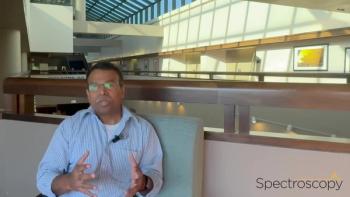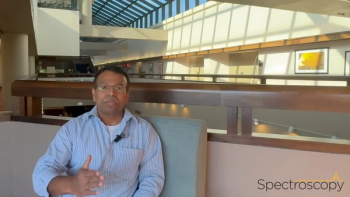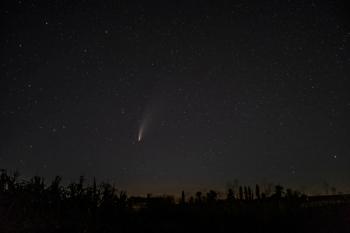
What Are the Latest Advancements in Nondestructive Spectral Analysis for Cultural Heritage Conservation?
Key Takeaways
- Non-destructive analytical technologies are transforming the study of historical paintings, offering insights into materials and hidden histories without damaging the artwork.
- Techniques like X-ray radiography, infrared imaging, and spectroscopy have become central to heritage science, enabling detailed analysis of surface features and concealed compositions.
The article highlights how rapidly advancing, non-destructive spectroscopic and imaging technologies, supported by AI, multi-modal data integration, and increasing instrument portability.
The study and preservation of historical paintings is important because of the artistic, historical, and cultural value they have. Since the origin of human beings, we have expressed ourselves through language and also through art. Historical paintings, therefore, allow us in the present to learn more about the past. Through analysis of cultural paintings, we can uncover new insights into the materials and hidden histories embedded in these pieces.
Recently, researcher Huizhi Han of Jiangxi Science and Technology Normal University explored how non-destructive analytical technologies are reshaping the study and preservation of historical paintings. Published in Spectrochimica Acta Part B: Atomic Spectroscopy, Han’s review article showcases how advancements in spectroscopic and imaging techniques are giving researchers unprecedented insight into the materials and hidden histories embedded in culturally significant artworks (1).
What is the main challenge in analyzing old works of art?
The main challenge researchers face when analyzing historic artwork is their fragility. Because these cultural items are often hundreds of years old, great care must be taken to ensure their integrity. Destroying the sample is a real concern; therefore, any methods that are used must be nondestructive in nature (2,3).
According to Han, the widespread adoption of sensitive and non-invasive analytical tools is resolving this dilemma (1). In the past decade, techniques such as X-ray radiography, infrared (IR) reflectance imaging, multispectral imaging, spectroscopy, mass spectrometry (MS), and computational modeling have transitioned from laboratory novelties to central pillars of heritage science (1).
In this review article, Han dives into the technologies currently being used for this purpose and how they are helping us learn more about surface features and concealed compositions, such as underdrawings, previous restorations, faded pigments, and degradation pathways (1).
What did the review article cover?
In this review article, Han provides a summary of the component systems in paintings, which includes pigments, binders, and carriers, and the techniques used to analyze them. From fluorescence spectroscopy and Raman spectroscopy to X-ray spectroscopy (XRS), electron paramagnetic resonance (EPR), infrared (IR) spectroscopy, and mass spectrometry (MS), the review highlights not only the expanding power of these platforms but also their growing refinement (1). Portable X-ray fluorescence (p-XRF), known for elemental mapping, now travels directly into museums and archaeological sites. Surface-enhanced Raman spectroscopy (SERS) and optical photothermal infrared spectroscopy (O-PTIR) are delivering molecular-scale detail previously considered unattainable without sampling (1). Meanwhile, synchrotron-based X-ray absorption spectroscopy (SR-XAS) remains unmatched for unraveling ultrafine chemical changes that govern long-term degradation.
Han also discusses that most of these techniques cannot capture the full complexity of a stratified, heterogeneous painting independently. As a result, multi-analytical strategies have been implemented that utilize the strengths of multiple spectroscopic techniques. For example, combining elemental maps generated by p-XRF with molecular information from IR or Raman techniques provides a clearer and more reliable identification of pigment mixtures and degradation products (1). The integration of hyperspectral imaging with AI-powered pattern recognition has converted traditionally point-based analyses into spatially extensive chemical maps, revealing hidden distributions and details that once escaped detection (1).
What challenges still remain?
Despite rapid progress, Han acknowledges several scientific challenges that must be overcome to achieve fully non-invasive, high-precision conservation diagnostics. For example, future work should look at how to use micro-scale, non-contact imaging to achieve the spatial resolution of micro-sampling without touching the artwork. Another is bridging macro-scale imaging with deep-layer chemical analysis to virtually reconstruct paint stratigraphy and decode the painter’s technique (1). Equally urgent is the need for computational systems capable of fusing diverse spectral data sets into uniform, intelligent interpretive platforms, enabling automated pigment classification and degradation prediction (1).
Right now, there are five technological pillars shaping the future of heritage science: micro-scale non-invasiveness, 3D stratigraphic chemical imaging, AI-driven data fusion, predictive conservation informed by real-time chemical monitoring, and widespread accessibility through instrument miniaturization. These five pillars are designed to drive advance spectroscopic and imaging techniques.
“The relentless advancement of these technologies, from the widespread portability of p-XRF to the molecular specificity of SERS and O-PTIR, and the unparalleled chemical insight provided by SR-XAS, has profoundly enhanced our ability to decipher the material composition, execution techniques, and degradation pathways of priceless artworks without causing harm,” Han said in his review (1).
References
- Han, H. Recent Advances and Trends of Non-destructive Spectral Identification of Pigments in Cultural Heritage Paintings. Spectrochimica Acta Part B: At. Spectrosc. 2025, 235, 107378. DOI:
10.1016/j.sab.2025.107378 - Wetzel, W. Analyzing Pigment Degradation in Cultural Heritage Artworks. Spectroscopy. Available at:
https://www.spectroscopyonline.com/view/analyzing-pigment-degradation-in-cultural-heritage-artworks (accessed 2025-11-25). - Wetzel, W. How Spectroscopy Has Shaped Cultural Heritage Preservation: Insights from 30 Years of Research. Spectroscopy. Available at:
https://www.spectroscopyonline.com/view/how-spectroscopy-has-shaped-cultural-heritage-preservation-insights-from-30-years-of-research (accessed 2025-11-25).
Newsletter
Get essential updates on the latest spectroscopy technologies, regulatory standards, and best practices—subscribe today to Spectroscopy.





